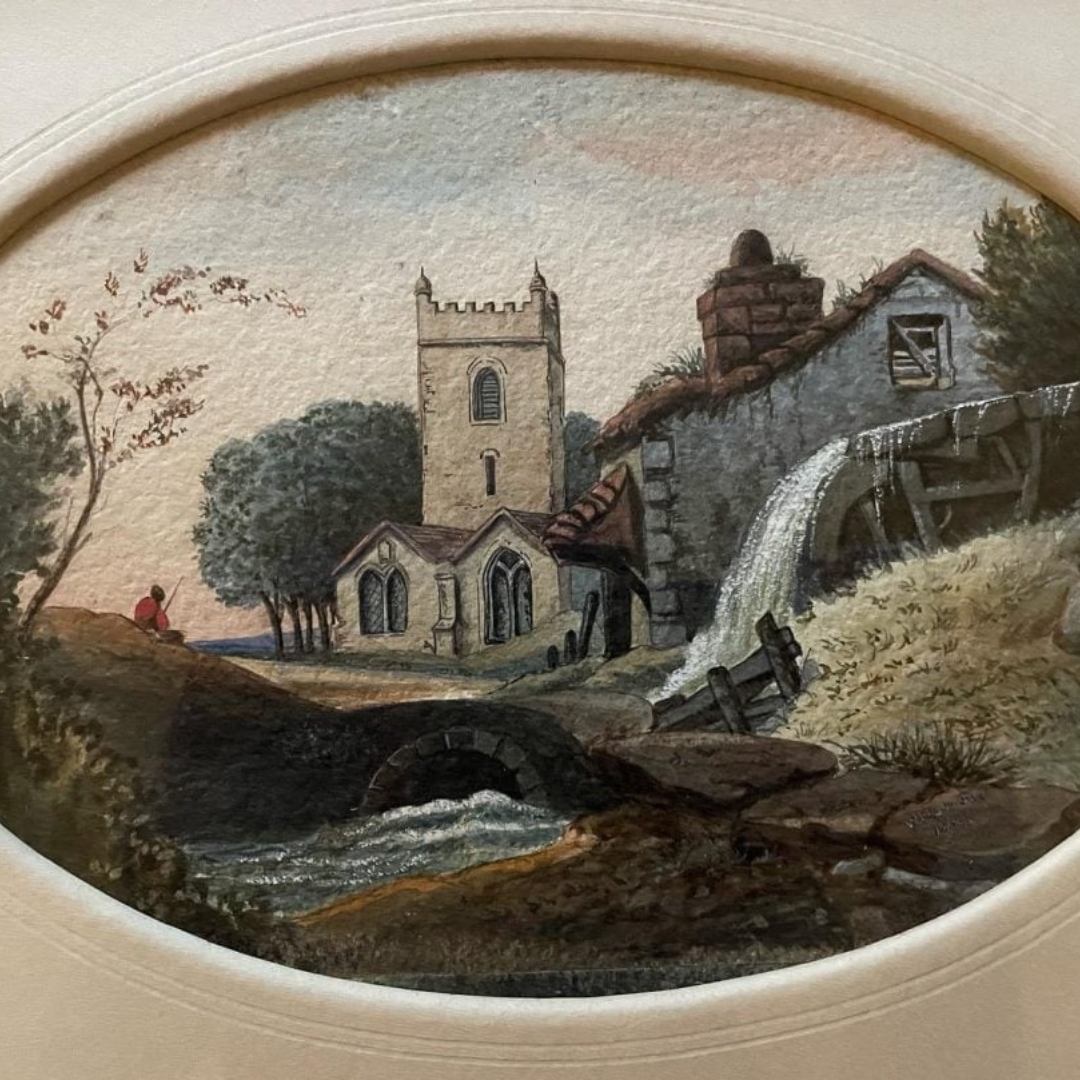A small watercolour painting, purchased for just $10 at a thrift store in Glenside, a quiet suburb outside of Philadelphia, has turned out to be an invaluable piece of history, offering a rare glimpse into the height of Black wealth in late 19th-century America.
In June 2023, Andy Robbins stumbled upon the painting at New Life Thrift, a charity shop linked to a local Presbyterian church. Intrigued by the signature, Robbins took a chance and Googled the name of the artist. The signature, reading “W.H. Dorsey” and dated 1864, led Robbins to identify the painter as William Henry Dorsey, a prominent African American artist whose work was once celebrated during the era of Reconstruction.
The painting depicts a Black man fishing next to a church and an old mill in what he described to local public radio station WHYY as a “serene landscape.”
Robbins shared his find on Instagram when he got home and was quickly contacted by researchers with 1838 Black Metropolis, a nonprofit dedicated to restoring the lost history of Philadelphia, which was a stronghold for free Blacks in the antebellum period.
This piece is really unique in that it is very rare to find 19th-century art that beautifully portrays Black people.
Dorsey was the son of Thomas Dorsey, who escaped slavery in Maryland via the Underground Railroad in 1836 and later amassed a fortune with a successful catering business. Thanks to his father’s wealth, Dorsey was able to pursue his passion for art and history.
In 1896, the Philadelphia Times described Dorsey as “bright but odd,” praising his “true artistic talent” and noting that he produced watercolours worthy of admiration by renowned artists.
Records from the Pennsylvania Academy of the Fine Arts show Dorsey exhibited at least 11 paintings there between 1867 and 1868, including one titled The Fisherman. The painting Robbins discovered is believed to be a possible match.
Source: ArtNet

